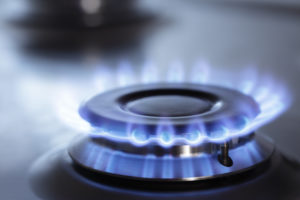 Natural gas rose for the first time in five days on Friday as short-term forecasts called for frigid weather across the eastern and central US. However, the energy source marked its biggest weekly decline since end-February as extended outlooks pointed to moderating temperatures across most of the US later in November.
Natural gas rose for the first time in five days on Friday as short-term forecasts called for frigid weather across the eastern and central US. However, the energy source marked its biggest weekly decline since end-February as extended outlooks pointed to moderating temperatures across most of the US later in November.
Natural gas for delivery in December rose 1.08% on Friday to $4.020 per million British thermal units, having shifted in a daily range of $4.074-$3.931. The contract plunged almost 5% on Thursday, its fourth straight daily decline, and settled the week 9.1% lower, the largest weekly drop since February.
Prices drew some support on Friday as forecasts for cold weather during the weekend implied heightened demand for the heating fuel, but a larger-than-expected build in US natural gas stockpiles checked gains.
The Energy Information Administration reported that US natural gas inventories rose by 40 billion cubic feet (bcf) in the seven days ended November 7th. This compared to analysts projections for a jump of around 36 bcf and exceeded both the five-year average and year-ago gains of 16 bcf and 22 bcf, respectively.
Total gas held in US storage stood at 3.611 trillion cubic feet as of last week, narrowing its deficit to the five-year average of 3.848 trillion to 6.2%. Inventories were 5.7% lower compared to last years 3.831 trillion cubic feet during the comparable period.
US weather
NatGasWeather.com reported on Friday that cold weather across the US will keep national natural gas demand over the next seven days at high and very high levels, compared to normal, but the weather trend for the November 21-27 span will shift to slightly warmer.
The entire US, apart from the southwestern areas, remained covered by much colder than usual readings, reaching 18-30 degrees Fahrenheit below usual. Overnight lows over the northern Plains and Rockies were expected to remain in the single digits and below the zero mark during the weekend, while the Midwest and interior Northeast should see readings in the 20s.
As the latest Arctic blast tracks out of the eastern US, a new cold blast will enter the northern US early next week, carrying fresh below-freezing temperatures and having a greater impact on the Midwest and Northeast compared to the current system.
Despite the cold short-term outlook, natural gas plummeted as extended forecasts projected a warm-up in the last ten days of November. Late next week, a Pacific jet steam will enter the western US, NatGasWeather.com reported, paving the way for milder weather systems to infiltrate the northern US, while the remaining portions of the country will also enjoy near-normal readings.
Temperatures
According to AccuWeather.com, readings in New York on November 18th will range between 26 and 34 degrees Fahrenheit, well below the average of 41-53, before jumping to the above-seasonal 48-56 degrees on November 24th. Boston will see the mercury plunge to 27 degrees on November 18th, 10 below normal, before rising to as much as 45-51 degrees 6 days later.
Temperatures in Chicago will range between 19 and 20 degrees on November 18th, compared to the average of 34-47, but will reach the above-seasonal 39-46 degrees on November 23rd.
Down South, Texas City will max out at 52 degrees on Tuesday, 19 beneath normal, before surging to the seasonal 74 degrees on Saturday. On the West Coast, Los Angeles will reach 77-79 degrees on November 17th and 18th, compared to the average of 72, and is expected to hold mostly at or little above seasonal levels through November 28th.





